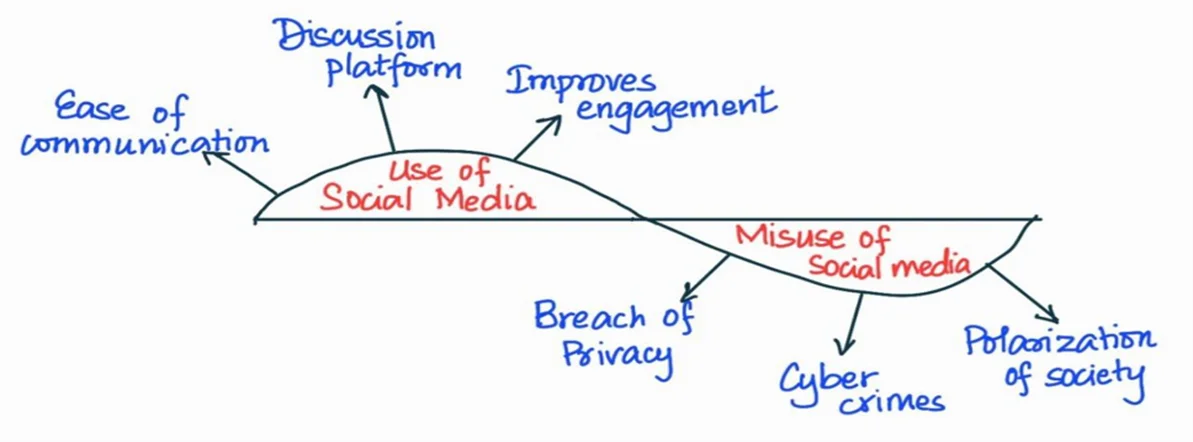Answer:
| Approach:
Introduction
- Start by highlighting the paradoxical nature of the internet and social media.
Body
- Discuss the various ways in which non-state actors have recently exploited these platforms.
- Identify and mention effective measures to tackle the misuse of the internet and social media by non-state actors.
Conclusion
- Conclude by reiterating the complexity of the challenge posed by the misuse of the internet and social media.
|
Introduction:
The use of the internet and social media by non-state actors for subversive activities has become a major concern worldwide. These platforms, while being avenues for communication and information exchange, are also exploited for spreading propaganda, recruitment, and coordinating malicious activities.
Body:
Recent Misuses of Internet and Social Media:
- Recruitment and Radicalization:
- Groups like ISIS and Al-Qaeda have extensively used the internet for recruitment and radicalization, reaching audiences globally.
- For instance, the recruitment of Indian youth by ISIS via online platforms.
- Spreading Propaganda:
- Social media has been a tool for disseminating extremist ideologies, fake news, and hate speech.
- Incidents like the Panchkula violence in India were exacerbated due to the spread of misinformation on social media.
- Coordination of Activities:
- Non-state actors have used encrypted communication to plan and coordinate attacks and subversive activities, as observed in the Paris attacks of 2015.

Guidelines to Curb the Threat:
- Strengthening Legal Framework: Enhancing cyber laws, such as the Information Technology (Amendment) Act, 2008 in India, to effectively counter internet misuse, aligning them with the evolving digital landscape.
- Monitoring and Surveillance: Fortifying online monitoring mechanisms while ensuring it doesn’t infringe upon privacy rights, as guided by the Supreme Court ruling on privacy in 2017.
- Public Awareness Campaigns: Conducting cyber literacy and awareness programs, like India’s “Cyber Swachhta Kendra” initiative under the Ministry of Electronics and IT, to educate citizens about online threats.
- International Cooperation: Amplifying global cooperation for cyber intelligence, information sharing, and harmonizing legal frameworks, as advocated by the Budapest Convention on Cybercrime.
Conclusion:
While the misuse of internet and social media by non-state actors poses a significant challenge, it can be addressed through concerted efforts involving legal measures, technology, public awareness, and international cooperation, ensuring a safer and secure cyberspace.
